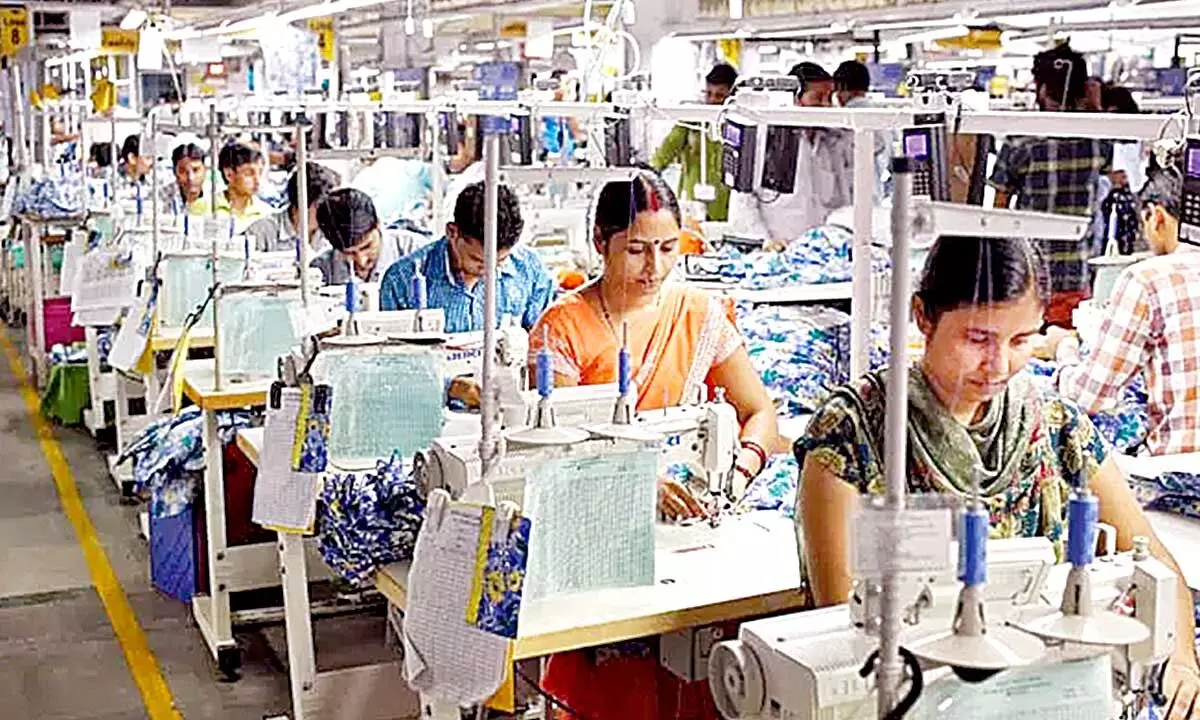Textile firms must diversify to survive amid uncertainty
In this era of startups and technology, continuous newness and innovations are the growth mantras
image for illustrative purpose

Product diversification, the addition of new markets (overseas as well as domestic), and vertical integration can support the clothing companies to have good business irrespective of seasons and specific market conditions in any specific market region. In fact, these are now mandatory
Seasonal nature is one of the major limitations of the clothing industry which is in fact a bottleneck for the growth of clothing manufacturing companies, as many companies are not offering a large and diverse range of products for various seasons. And now after Covid-19 when the market has almost achieved the growth level which was there before the pandemic, again there is uncertainty prevailed- majorly for those exporting clothing products to overseas. And up to a certain extent, almost the same is the condition in India's regional markets that are facing inflation.
Around six months back textile supply chain has good business and the last three months have been lean from the demand side. Though in near future, demand will be again there in overseas as after inflation come down and inventory clears at stores will push the customers to buy again and more. Coming festival seasons are as usual biggest opportunity or season for India's regional markets.
Product diversification, the addition of new markets (overseas as well as domestic), and vertical integration can support the companies to have good business irrespective of seasons and specific market conditions in any specific market region. In fact, these are now mandatory.
The majority of clothing exporters have not developed themselves into multi-products as even today their focus is summer wear, that too women and kidswear. They could not develop summer wear and menswear as their strength.
To stay relevant for 365 days, and to overcome this uncertainty, this is the high time for diversification into those products which was not been done so far. A major question is that it could not take place so far so how it will happen now. The best answer could be that it now or never situation. Most of the things are in India's favour which was hardly there ever so companies especially small firms should focus on this product diversification rather than just working in their comfort zone and saying that this is our specialisation. Clothing companies can also explore accessories, home textile segments, and textile-based toys are also an emerging category. Similarly, they can expand their horizons into organic garments.
If the firms have deep pockets, vertical integration is also not a bad idea, as per their market hold and resource availability they can go for backward or forward integration. Investment is there for sure but it will make them more cost-effective and can open new growth paths also.
There are some recent examples, where companies that were earlier into mainly woven-based products and now entered into knit-based. Some of the home textile-based companies started manufacturing of clothing products also and vice-versa.
The same aggressive approach is required to focus beyond the USA and European Union. What so far has happened in the case of small clothing export firms, they participate in a few specific trade shows and get clients from the show. These firms should focus on their product strengths and to explore new markets accordingly. They can also see emerging markets like Canada, Australia, Japan, and UAE and develop, and change their products according to the need of these markets.
Still, there are hundreds of clothing companies manufacturing produce either for overseas clients or completely only for the Indian market. Having similar manufacturing systems, there are also firms that easily manage production for their overseas as well as Indian clients. There are certainly different terms and working differences in manufacturing for overseas and Indian market, but there is nothing wrong, if they combine both of them, with this they can feed the factories for 12 months, rather than just working fully for 6-7 months and rest utilising just half or less capacity.
The idea is to get business as much as possible and deliver on time so, whatever suits to a company, in the above-mentioned ways or something extra, their promoters should not hesitate to take a step forward.
In my circle, some have their apprehension about the changes I suggested, but one can easily see that there are many successful examples. Companies which adopted these changes have grown.
From the years, overseas clients have become seasons less, as usual many Indian retailers are following them and going in the same direction. The majority of the retailers are offering the entire range of products so clothing manufacturers can also work in a similar direction. There are plenty of options and support structures for every option too. Later or sooner, these adoptions will be like mandatory to survive in the business. And to cut the long story short, in this era of startups and technology, continuous newness, and innovations are the growth mantra.
(The author owns a garment
manufacturing setup in a rural area, which employs mostly women workers)

